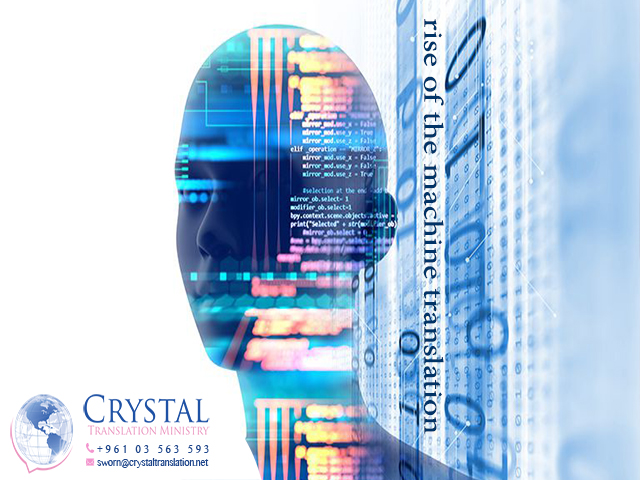The Rise of Machine Translation: How did it start and how will it help?

Machine translation: The translation of text by a computer, with no human involvement.
The Rise of the Machine Translation: How did it start and how will it help?
What is Machine Translation?
Definition 1: The translation of text by a computer, with no human involvement.
Definition 2: Machine translation (MT) describes a software-based translation approach that translates content from one language to another.
Definition 3: Machine translation (MT) is the task to translate a text from a source language to its counterpart in a target language.
How old is Machine Translation?
Machine translation is a relatively old. The 1970s marked the start of projects that aim at achieving automated translation.
Systran:
It is one of the oldest Machine Translation Companies. It translates from and to around 20 languages. SYSTRAN was used for the Apollo-Soyuz project (1973), by the European Commission (1975), and even used by Google’s language tools until 2007.
What are the basic machine translation aspects?
- Rule-based Machine Translation (RBMT): 1970s-1990s
- Statistical Machine Translation (SMT): 1990s-2010s
- Neural Machine Translation (NMT): 2014-
After introducing what is machine translation, its history and branches, let’s talk about its challenges, benefits and use.
Evolution and Rapidity
Machine translation increase productivity and helps translators translate faster. Through machine translation more content is absorbed and delivery is made faster.
Machine translation can also be referred to as automated translation, automatic or instant translation.
There are three types of machine translation system: rules-based, statistical and neural:
- Rules-based systems: they use a combination of language and grammar rules plus dictionaries for common words. Specialist dictionaries are created to focus on certain industries or disciplines. Rules-based systems typically deliver consistent translations with acceptable terminology when connected to specialist dictionaries. A rule-based system requires experts’ knowledge about the source and the target language to develop syntactic, semantic and morphological rules to achieve the translation.
- Statistical systems: They have no knowledge of language rules. Instead they "learn" to translate through the analysis of large amounts of data for each language pair. They can be trained for specific industries or disciplines using additional data relevant to the sector needed.
This type delivers more fluent-sounding but less consistent translations.
- Neural Machine Translation (NMT): This is a new approach that makes machines learn to translate through one large neural network. The approach has become increasingly popular amongst MT researchers and developers, as trained NMT systems have begun to show better translation performance in many language pairs compared to the phrase-based statistical approach. Neural machine translation models fit a single model rather than a pipeline of fine-tuned models and currently achieve state-of-the-art results.
It is true that translation is an art, but did you know that one of the earliest goals for computers was the automatic translation of text from one language to another?
Let’s give translators some credit! They did help with the evolution of computers!
Why did humans think of creating machine translation and how does it help?
Machine translation is perhaps one of the most challenging artificial intelligence tasks given the fluidity of human language. The rise of machine translation was due to the rise of technology which demanded quick, cheap and tech-advanced translations; that’s why many companies have turned to machine translation.
Machine translation is fascinating, but does it come bug-free or can it replace human translators?
The Machine translation challenges:
- The large variety of languages, alphabets and grammars
- Sequence translation
- Language VS numbers only
- Multiple answers
- Language exceptions
- Human intelligence
- Human tricky sequences
And most important of all FEELINGS!
Conclusion: Machine translation is a great added-value to translators; it saves time and enables fast delivery.
Read About Human Translators Here
Follow us on our Facebook Page Here

